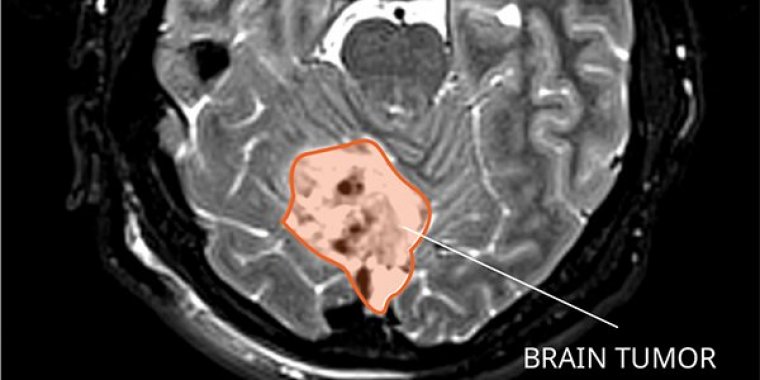| News / Science News |
New method to classify brain tumour in children
Brazilian researchers have developed a low-cost method of classifying the most common malignant brain tumour in children, which they say can help medics diagnose and treat the condition.

MRI of a medulloblastoma in the brain. Photo: NCI-CONNECT Staff
Medulloblastoma, a tumour of the central nervous system, affects one in every 200,000 children and adolescents worldwide and represents 20 per cent of all childhood brain tumours.
The World Health Organisation (WHO) divides the disease into four molecular subgroups according to their clinical and molecular characteristics. Categorising patients into one of these groups helps oncologists choose an appropriate treatment, with some groups requiring more aggressive therapy than others.
However, low- and middle-income countries cannot afford to routinely use modern sequencing platforms to carry out this molecular classification.
Gustavo Alencastro Cruzeiro, a geneticist at the University of São Paulo’s Ribeirão Preto Medical School and lead developer of the method, said it was “faster and cheaper” than similar techniques used in developed countries.
To develop the new method, researchers analysed 92 samples of frozen medulloblastoma’ tissue gathered from children and young adults up to 24 years old undergoing treatment in three hospitals in the state of Sao Paulo.
They extracted ribonucleic acid (RNA) sequences from each sample and converted them into stable complementary DNA (cDNA), which was processed using a technique called real-time polymerase chain reaction (PCR), which amplifies the signal of genes activated by the multiplication of cDNA molecules.
This allowed researchers to identify a set of 20 genes associated with all four of the medulloblastoma molecular subgroups: SHH, WNT, Group 3 and Group 4. By using algorithm assessment and bioinformatic analysis techniques, the team identified the minimal number of genes needed to molecularly classify medulloblastoma, without losing accuracy.
The method was undoubtedly a step forward, as it allowed for more cost-effective diagnosis. But it would take time for the new method to become available in hospitals. (SciDev.Net)
YOU MAY ALSO LIKE




